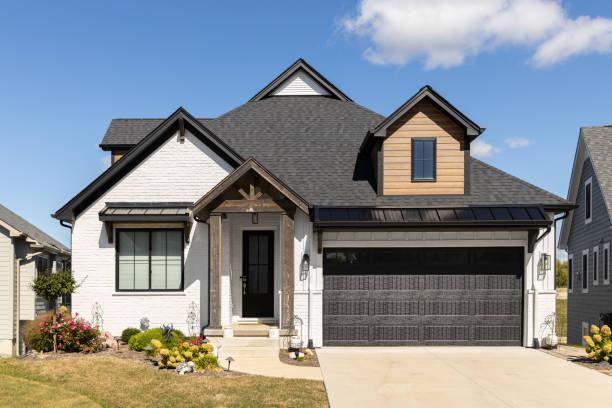Roof Painting: Expert do's and don'ts to know

Painting your roof might seem straightforward, but without the right knowledge, it can quickly turn into a costly mistake. Choosing the wrong products or skipping essential prep work can lead to serious issues—peeling paint, trapped moisture, and ultimately, a shorter roof lifespan.
Whether you're a homeowner tackling a DIY project or planning to hire a contractor, understanding the do’s and don’ts of roof painting is crucial. This guide outlines the expert-approved best practices to help you protect your roof, enhance your home’s look, and avoid expensive rework. Roof painting is not just about aesthetics—it's a strategic investment in longevity and performance. With the right techniques, you can increase energy efficiency, prevent premature aging, and even boost your property's value. Knowing what to do—and what to avoid—makes all the difference between a successful, lasting finish and one that fails too soon.
Why Roof Painting Matters
Your roof is constantly exposed to sunlight, rain, wind, and debris. Over time, this exposure causes fading, cracking, mold growth, and other damage. Roof painting isn’t just a cosmetic touch-up—it’s a proactive step to:
-
Protect roofing materials from UV rays and moisture
-
Improve energy efficiency with reflective coatings
-
Extend the life of your roof
-
Enhance your home’s curb appeal
But for these benefits to last, it’s essential to approach the project the right way.
Expert Do’s: What You Should Always Do When Painting a Roof
1. Inspect and Prepare the Surface Properly
Preparation is 80% of the job. Before painting, clean the roof thoroughly using a power washer or scrub brush. Remove loose paint by scraping and sanding. Repair cracks, damaged shingles, or tiles.
Pro Tip: Let the roof dry completely before applying primer or paint. Moisture trapped under coatings can cause peeling or mold.
2. Choose the Right Paint for Your Roof Type
Different roofing materials require different paint formulas:
-
Metal: Acrylic or elastomeric coatings with rust-inhibiting primer
-
Asphalt shingles: Water-based, breathable paints
-
Tile (clay or concrete): Masonry paint with waterproof properties
-
Flat roofs: Silicone or acrylic elastomeric coatings
Always check the paint label for compatibility with your roof material.
3. Use a Primer When Needed
Priming ensures better adhesion and longer-lasting results—especially on metal roofs or porous surfaces like concrete.
4. Paint in the Right Weather Conditions
Ideal conditions are mild temperatures (50°F–85°F), low humidity, and no rain forecast for at least 24 hours.
Avoid painting in direct sunlight on hot days—this can cause the paint to dry too quickly and crack.
5. Apply Even, Consistent Coats
Follow manufacturer guidelines for coverage thickness. Two thin coats are better than one heavy coat, ensuring durability and a smooth finish.
6. Prioritize Safety
Use appropriate gear, including safety harnesses, ladders, and non-slip shoes. Roof work can be dangerous—don’t take shortcuts.
Common Don’ts: Mistakes to Avoid at All Costs
1. Don’t Skip Cleaning
Painting over dirt, algae, or old peeling paint will lead to poor adhesion and early failure. Even if the roof looks "clean," contaminants may prevent proper bonding.
2. Don’t Paint Over a Damaged Roof
Painting won’t fix leaks, structural issues, or severe weather damage. Ensure all repairs are made before beginning the paint job.
3. Don’t Use Interior or Generic Paints
Only use paints designed for roofing and exterior use. These are formulated to withstand UV rays, temperature changes, and precipitation.
4. Don’t Rush the Process
Skipping steps—like priming or letting the roof fully dry between coats—will compromise the final result. Take your time for a long-lasting finish.
5. Don’t Forget Ventilation and Drainage
Blocked vents or gutters can trap moisture beneath your coating. Keep these areas clear to protect the integrity of both paint and roof.
6. Don’t Ignore Product Instructions
Every paint type has its own dry time, application method, and recoating schedule. Following the label instructions ensures proper results.
Final Thoughts
Roof painting is a high-impact home improvement—when done right. By following the expert do’s and avoiding the common don’ts, you’ll not only achieve a beautiful finish but also protect your roof for years to come.
From selecting the right products to proper application and maintenance, every step matters. Whether you're refreshing an old roof or updating your home’s style, a well-executed paint job can make a powerful difference.
Frequently Asked Questions
Q: Can I paint my roof myself, or should I hire a professional?
A: DIY is possible for accessible, low-slope roofs with the right tools and safety precautions. For steep or high roofs, hiring a professional is safer and often more cost-effective in the long run.
Q: How often should a roof be repainted?
A: Typically, every 8–12 years depending on paint type, roof condition, and climate exposure.
Q: What’s the biggest mistake homeowners make when painting their roofs?
A: Skipping surface preparation or using the wrong paint for their roof type—these two mistakes cause most failures.
Q: Can roof paint help reduce my energy bills?
A: Yes. Reflective or “cool roof” paints can reduce heat absorption and lower cooling costs in warmer months.
- Art
- Causes
- Best Offers
- Crafts
- Dance
- Drinks
- Film
- Fitness
- Food
- Games
- Festival
- Gardening
- Health
- Home
- Literature
- Music
- Networking
- Other
- Party
- Religion
- Shopping
- Sports
- Theater
- Wellness



